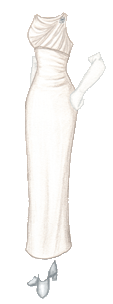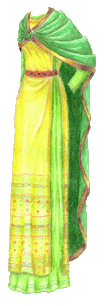 Click for larger version; click for the list of dolls.
Click for larger version; click for the list of dolls.
I got an e-mail from one of my readers, Kim, a while back, talking about the designs of Irene Lentz, a costume designer who worked on some Doris Day movies that she recommended to me, one of which was Pillow Talk. I have to do further viewing before I can be familiar with her work, though — it looks like Pillow Talk was costumed by Jean Louis (who, credited for “gowns,” probably designed this costume) and Bill Thomas. Anyways, whoever designed them, I love Doris Day’s outfits in the movie. Her character is an interior designer, and she always looks fabulous: the movie was released in 1959, and her clothes are right there between smart 1950s femininity and 1960s clean style. The movie itself was something I had to kind of turn off the overly serious and feminist parts of my brain to enjoy: I know it’s supposed to be a light-hearted sex comedy, and the way the guy manipulated the girl (and her revenge) was really quite amusing. Still, when viewers are supposed to take the baby at the end as proof that our hero and heroine achieved ‘happily ever after’, it signified to me “she’s got three, four years tops before he gets bored of her.” Yeah, call me a cynic but I can’t watch a movie like that without scripting out a few months worth of premarital counseling for the dysfunctional couple in my head. Doesn’t mean I don’t have the other Day/Hudson movies on reserve at the library…
 Share
Share